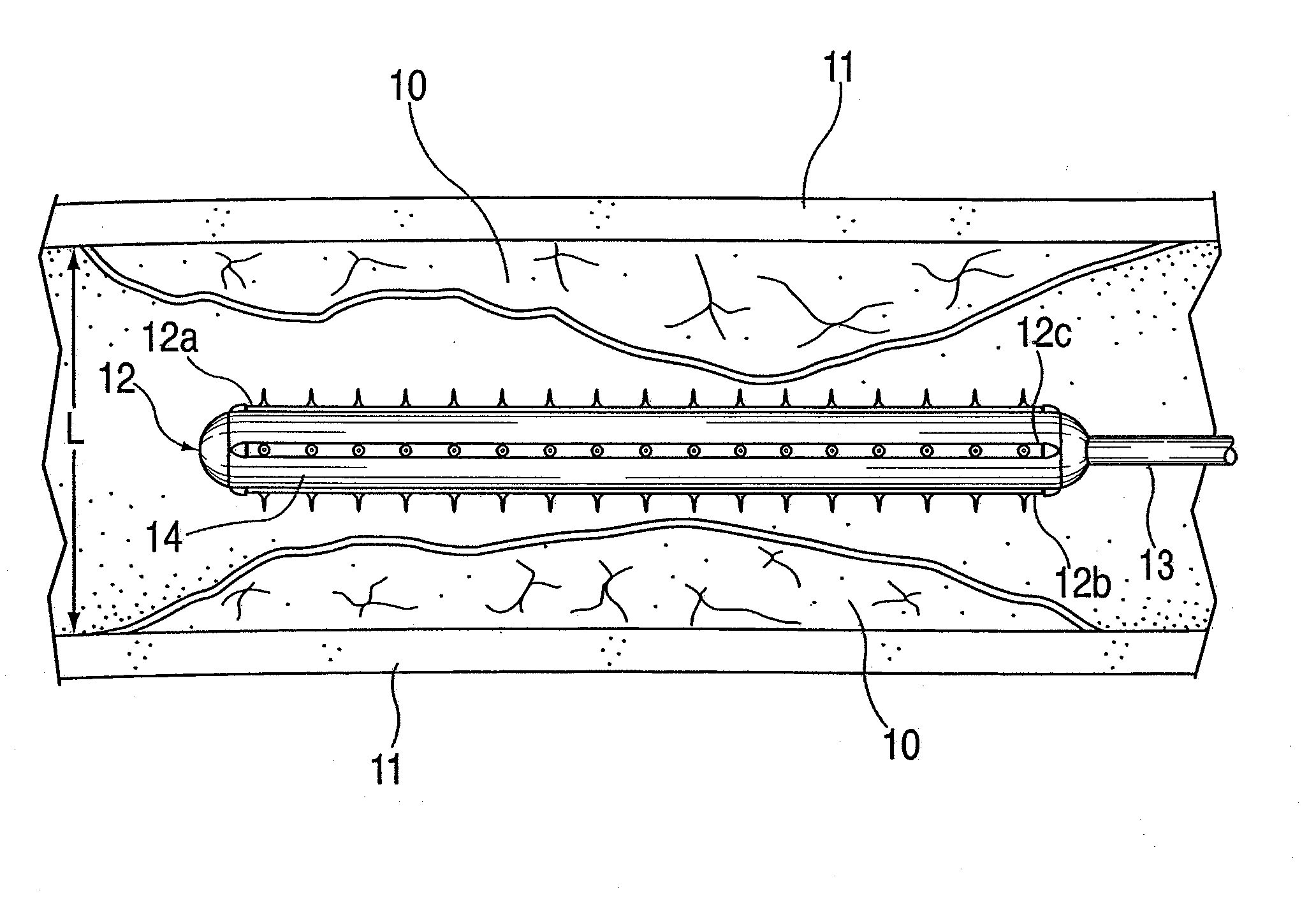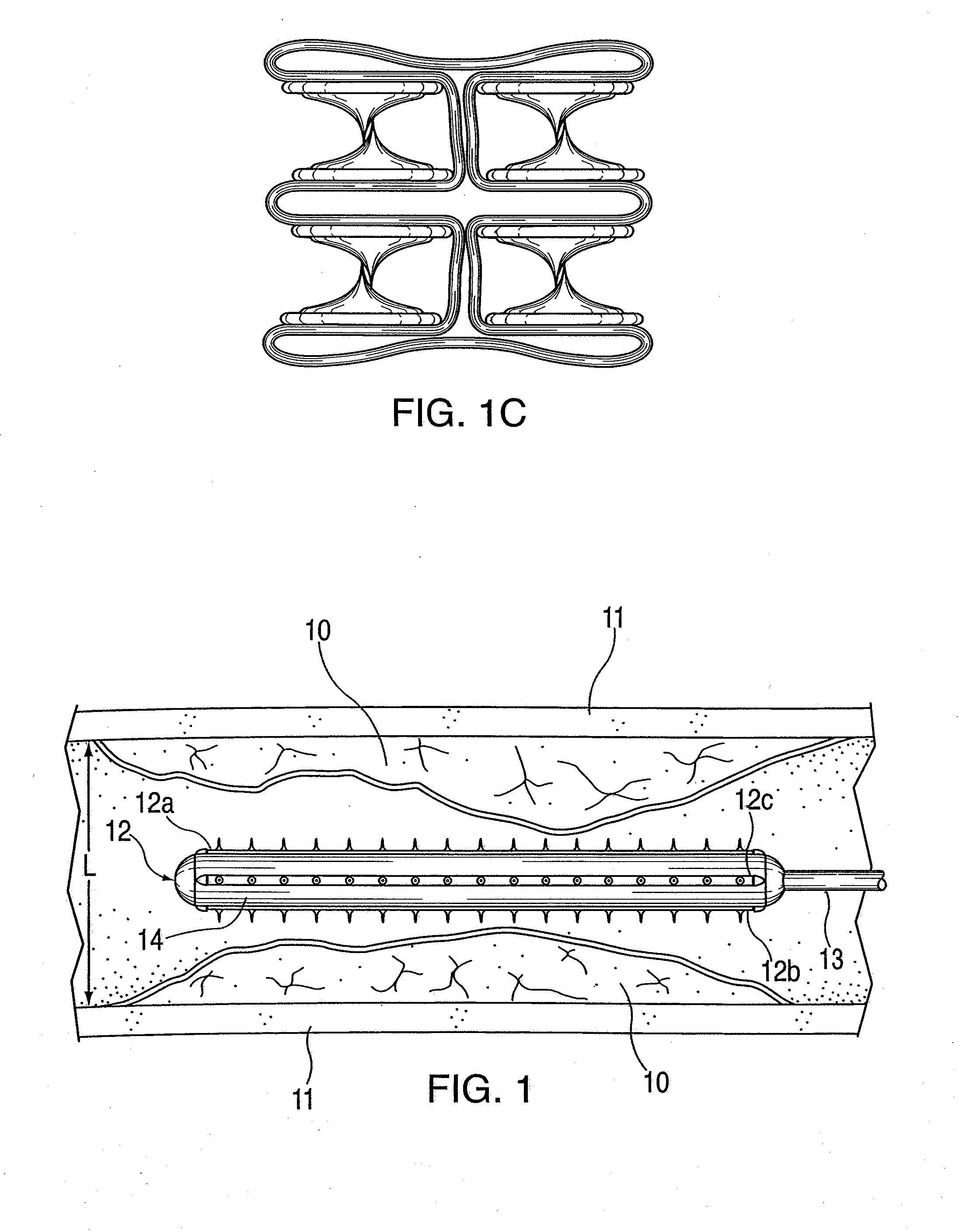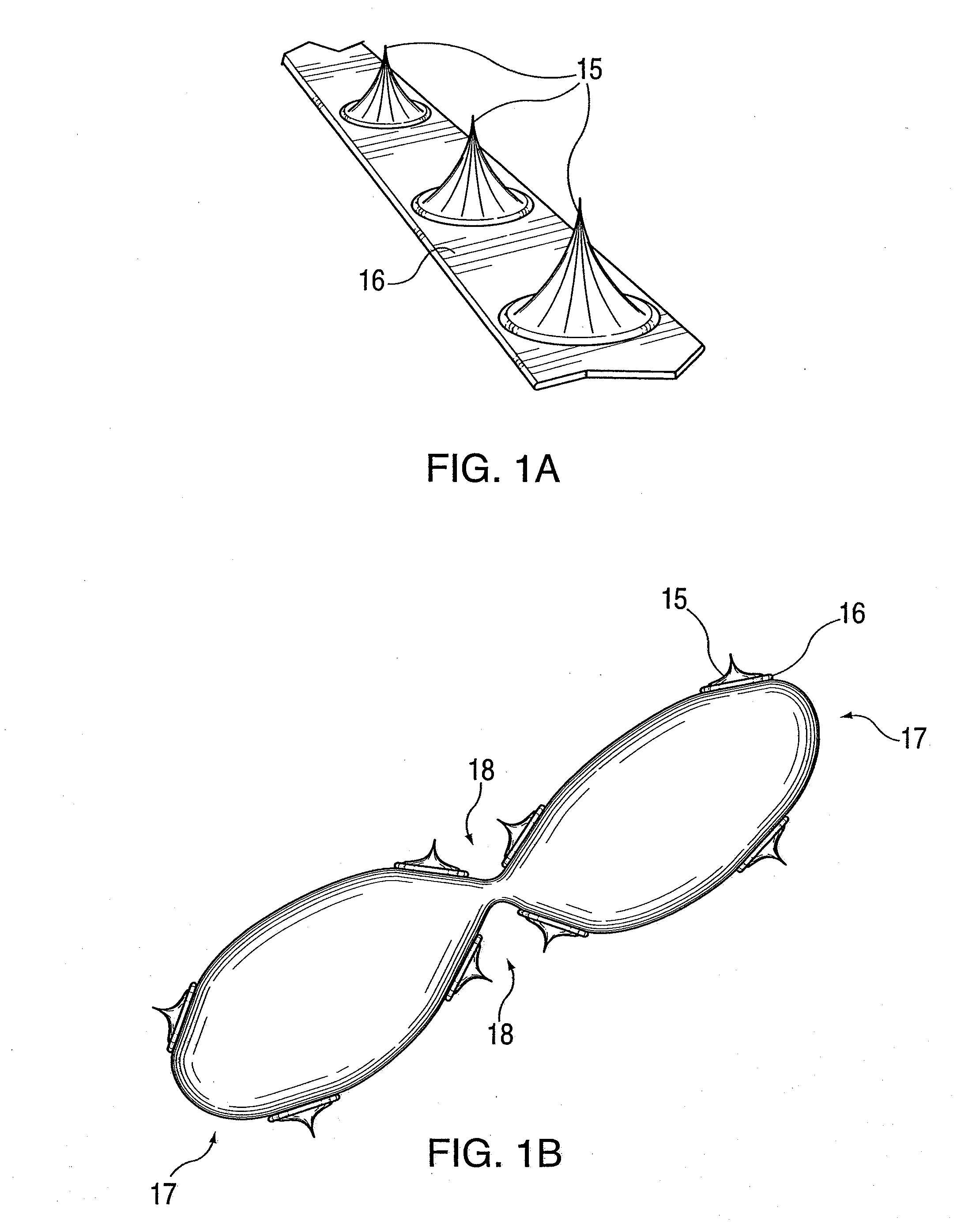[0012]To overcome the problems and disadvantages of prior practices of dilating plaque material in blood vessels through balloon angioplasty and with or without the use of post-angioplasty
stent emplacement, the present invention employs an
intravascular device for pre-angioplasty treatment carrying rows or patterns of small sharp spikes that are actuated by an expansion balloon or other apparatus to pierce the luminal surface of atherosclerotic plaque with lines or patterns of microperforations which act as serrations for forming cleavage lines, expansion lines, or planes in the plaque as a preparation prior to balloon angioplasty. When using a balloon actuated mechanism to press the spikes into the plaque to create the microperforations, expansion pressures of a full range may be used, from less than 2 atm to more than 10 atm. This
pressure range may only be necessary for the purpose of introducing the spike elements into hardened calcified plaque. When a balloon actuated mechanism is used to create the microperforations, the
blood vessel is only being prepared and is not being fully dilated to its intended
diameter. The
diameter of the
artery is much larger than the fully expanded diameter of the spike device. Therefore the wall of the
artery does not experience
high pressure when the spike device is balloon actuated avoiding the danger identified in
high pressure balloon angioplasty.
[0013]After preparation of the plaque with the microperforation and
serration procedure, the plaque can be compressed and the artery lumen safely and accurately dilated and stretched, using low pressure balloon angioplasty, to its intended diameter without creating numerous and substantial dissections and elevated flaps. The microperforation and
serration enable the plaque to be dilated more evenly and smoothly and avoid forming random cracks that may lead to
dissection and residual
stenosis. The plaque, after it has been pre-treated with microperforation and serration, may also be dilated with lower pressure than that which is used in standard balloon angioplasty. The lower intra-balloon pressure (e.g., less than or equal to 4 atm and very often less than or equal to 2 atm) causes less disruption of the plaque, fewer dissections, and less injury to the artery wall. This “low pressure” or “minimal injury” angioplasty is less likely to cause the
biological reaction that often follows balloon angioplasty with
neointimal hyperplasia or
smooth muscle cell replication.
[0014]In addition, microperforation and serration permits the plaque to expand with less fracturing or disruption of the plaque during balloon angioplasty. By preparing the plaque using microperforations and then performing a balloon angioplasty at low pressure, the number and severity of dissections is reduced. This decreases the need for
stent placement to be used to treat dissection or residual
stenosis after balloon angioplasty. The subsequent balloon angioplasty may be performed at low balloon pressures of about 4 atmospheres or less due to preparation of the plaque with perforations, so as to avoid injury to the
arterial wall. By performing plaque preparation and then low pressure angioplasty, there is less likelihood of a dissection occurring deeply and exposing the
media layer of the artery.
Exposure of this artery stimulates
thrombus formation by collagen
exposure and also stimulates
smooth muscle cell growth which later causes neointimal hyperplastic
occlusion of the artery. This decrease in number and also decrease in severity of dissection is a key differentiating factor in comparison to
cutting or scoring devices.
[0017]The pre-angioplasty treatment of a plaque site may also be combined instead with drug-eluting balloon (DEB) angioplasty or drug-coated balloon (DCB) angioplasty. Due to the various applications of balloon angioplasty, there are a variety of medications that may be used, such as: plaque-reducing medication,
thrombus inhibiting medication, inhibitors of
cell growth, other biologically active treatments, and
stem cell delivery. The intended effect is to have the medication taken up by or adhered to the plaque and / or wall of the diseased artery at the time of balloon angioplasty. The preparation of the plaque and the creation of microperforations enhances the uptake and
biological activity of the medication. The creation of new plaque surface area in the depths of each of the microperforations, and also the location of the plaque that has been exposed, in the top layer of the plaque without exposing the medial layer, is further facilitative of the
biological activity of the medication.
[0019]Another variation for the pre-angioplasty treatment is the use of a balloon-restricting mesh over the expansion balloon for restricting its maximum expansion diameter so that it is less than the
blood vessel diameter. The mesh minimizes the potential of the balloon to expand beyond the
stenosis site into an hour-glass shape, and also limits the amount of pressure that is delivered to the plaque by limiting the balloon to a defined radial expansion. The mesh structure can be include spike buttons or by milled (through
grinding,
laser cutting,
metal extrusion,
photolithography, or other means) to form sections with height variations that act as microperforations.
 Login to View More
Login to View More  Login to View More
Login to View More 


